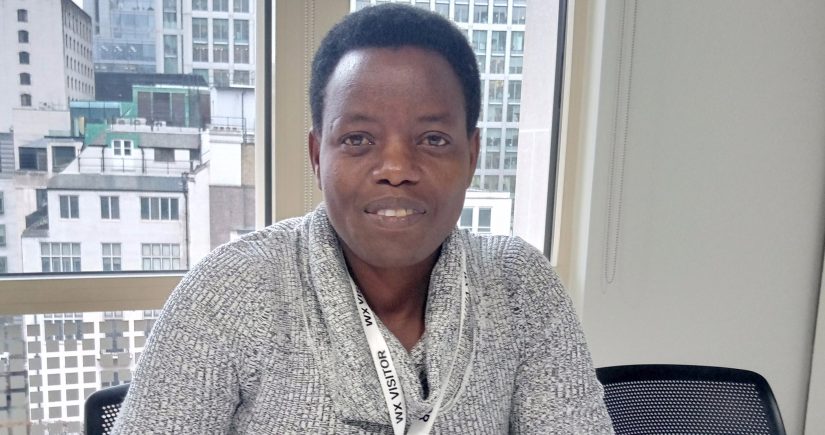Since 2017, Engineers Against Poverty (EAP) has partnered with the Royal Academy of Engineering on the Africa Catalyst. Local engineering capacity is an essential component to economic and social development, however in Sub-Saharan Africa, there is a chronic lack of engineering capacity. The Africa Catalyst aims to strengthen professional engineering bodies in the region so they can effectively promote the profession to young people, share best practice and ultimately drive development through capacity.
In this instalment of Spotlight on Africa Catalyst, we speak to Cecile Uwimana from the Institution of Engineers Rwanda (IER) about IER’s internship programme, Bridging the Gap.
Could you tell us a little about your background, and what drew you to engineering?
My name is Cecile Uwimana, a member of the Institution of Engineers Rwanda. My background is in civil engineering. I coordinate the activities for Africa Catalyst Project, a project which is supported by the Royal Academy of Engineering to bridge the gap which exists between academia and industry in Rwanda.
What is it about engineering that you find most interesting?
I’m most interested in civil engineering, because it what I studied in university and have been practising for last 20 years. Currently, I am working on water project and constructing structures for a water supply in the city of Kigali.
Can you tell us about IER’s internship programme, Bridging the Gap?
In my experience as an engineer, I realised there were major gaps between academia and industry. When I heard that the Royal Academy of Engineering offers support to bridge this gap through professional bodies, I decided to apply for the funding. Most construction companies want to recruit someone with experience, in most cases someone who has had hands-on experience. Bridging the Gap has helped a number of graduate engineers to get this experience, and to then go on to gain employment after they’ve completed their internships. Even for those who are not hired, the programme helps them to build a profile which supports their employment prospects by developing practical skills.
Can you tell us about what else the IER is doing to encourage young people into engineering?
As part of our outreach we go to primary and secondary schools, to encourage the students to get into science, technology, engineering, and maths (STEM) subjects. We continuously raise awareness around the engineering profession and we endeavour to identify employment opportunities for our members. We have also signed a Memorandum of Understanding with local institutions to offer internships to graduate engineers.
‘Phase Three’ of Bridging the Gap has now started – can you tell us more about the challenges you’ve come across in the latest phase of the internship programme?
One of the biggest challenges we face is a lack of female graduate engineers. Our target has been to attract a large number of women but so far, we have attracted less than 30% for the last two phases. We are doing everything possible to increase the number in this cohort. We’re gathering data from engineering universities across Rwanda to find out how many women have graduated in the last two years and planning to hold a workshop encouraging them to embark on a career in engineering.
What results has Bridging the Gap achieved so far?
So far, we have achieved some good results. In the first year (2017) that we ran the internship programme, two-thirds of our interns went on to get jobs. In 2018, this went down to one-third, but this is explained by the fact that some went on to continue their studies and completed masters’ degrees. One challenge we’ve come across in 2019 has been understanding where our interns go after completing their internships, and this is one of the challenges we need to overcome in 2020. We have establish a detailed database and keep close contact with them to keep it updated.
Finally, what’s been your greatest success over the last three years?
In the first year, our knowledge around monitoring, evaluation and learning (MEAL) grew so much: our learning in this respect has been our biggest success. It was my first project, and the training that EAP provided to IER was extremely helpful. Three years on, we can see the impact on our approach to MEAL in terms of the work we’re doing to attract young graduate engineers to join the Institution of Engineers Rwanda, where they are mentored and learn how to work to the required engineering standards. Another success has been working with EAP staff, and the support we have received through them.
